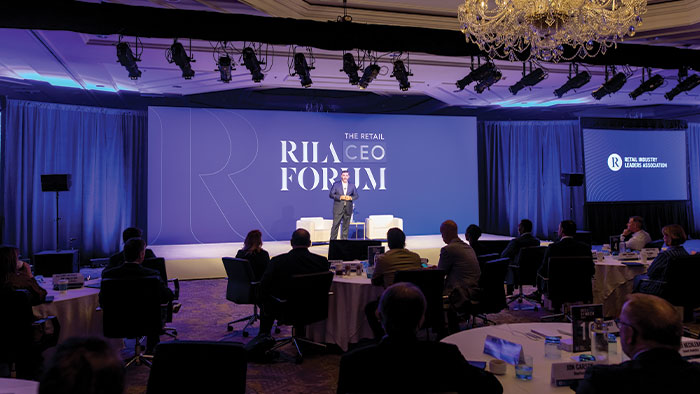The Impact of Short-Term Disruption on Long-Term Goals
A look at retailers' sustainability goals
- By [ Erin Hiatt ]
- 05/21/2020
While the world we live in today is very different than that of 2019, a few things remain the same – the impact of climate change on our organizations and the push to meet corporate sustainability goals by stakeholders. Due to the new drastic changes we’re facing in the world today, companies are now challenged to consider the impact of disruption on their goals and long-term strategies.
While it’s a bit too early to tell direct impact on long-term sustainability goals, it’s worthwhile to examine what is happening in the markets that impact goal strategies and how retailers can take this time to identify areas of risk and opportunity. We sat down with our partners at Schneider Electric Energy and Sustainability Services to ask them a few questions about the marketplace and how disruption is affecting energy sustainability goals. They provided tips for retailers to progress forward in the new normal.
What energy market impacts have we seen due to recent disruption?
Robbie Fraser, Senior Commodity Analyst: The most apparent impact is the steep losses in energy demand. Crude is among the most impacted commodities, with peak losses of more than 30% globally. Electricity demand is down globally, but the extent has varied by region. Lower demand combined with cheap natural gas and increased renewable capacity continues to squeeze coal out of the generation mix in many regions.
What further impacts to energy markets can we anticipate that are most relevant to retail energy goals?
Robbie Fraser: There is still plenty of uncertainty, and the markets reflect that. Volatility remains high, even as sentiment has started to turn a bit more optimistic. There is considerable risk to both the upside and downside.
The coming weeks are critical as states and countries assess the impact of relaxing some restrictions on personal and business activity. Certain indicators are turning the corner, such as increased vehicle travel, increased refinery activity, and so on, but we are generally still a long way from back to “normal.” Those trends will need to continue, and data suggesting otherwise could quickly bring in some selling interest on fears of another dip to the downside.
Most companies are sticking to established risk goals and existing policies. Those with a defined strategy have been better positioned to navigate the current climate.
There has been an increase in companies desire to hedge medium & long-term energy spend to mitigate ongoing price volatility. Most companies are looking at a time horizon around 18-24 months. At the same time, the degree of business uncertainty has sometimes prevented a company from acting even if they like the price and potential benefits of taking action.
There continues to be high differentiation across sectors and geography, so there is a need for focused expertise as there is no “one-size-fits-all” strategy for navigating the energy market in this climate.
Looking at the typical structure of a retailer’s energy-related goals, where are the biggest areas of risk right now? How should a retailer evaluate if they need to change their energy goal(s)?
Erik Mohn, Director – Sustainability: In terms of non-market related risks for retailers, communication and messaging of goals that are external in nature will need to be reevaluated. For instance, if a retailer has set Science-Based Targets (SBTs) on a baseline of a primarily brick and mortar portfolio that favors Scope 1 and 2 emissions, but may now be evaluating shifts toward more mail-order and e-commerce approach, their scope 3 emissions could be changing drastically, while seeing more predictable declines in Scopes 1 and 2.
Companies may need to look at how these changes affect rebaselining. If Scope 3 emissions become a larger portion of their emissions, or material impacts to the portfolio or business model could occur, this may be a key trigger to reset targets. On the other hand, folks with goals expiring more in the near-term may have a separate challenge around how to message and provide context around potential drops that may show them overshooting a 2020 target. It’s important to be transparent and credible about any claims, good or bad.
How does the conversation around revisiting a goal differ based on the type of goal, say around renewables for instance?
Hans Royal, Director – Strategic Renewables: As we see a shift toward more Scope 3 emissions from supply chain and less brick and mortar emissions, there will be more nuanced emission reduction opportunities. Things will become more complicated, and companies may have less direct control and influence. Those value chain conversations that may have been punted will come more into focus.
In terms of renewables, there hasn’t been a large population of organizations changing their renewable energy-related goals directly but depending on the credit or financial impact of recent market disruption, there definitely could be a shift in strategy on how to achieve goals in the near term.
Understanding various options to how a company can hit their target, and specifically the risks of those options, is crucial. For instance, hitting the pause button on long-term commitments like PPAs (whether onsite or offsite, wind or solar, etc.) in favor of RECs may seem prudent today, but pose the risk of higher renewables pricing in the future, due to expiring tax credits. This is notwithstanding other market forces like wholesale pricing, supply chain disruptions, high demand from other corporates, continued RPS requirements, and other risks that are present in the market.
With some of these forces, corporate renewable purchasing has shifted a bit from a buyer’s market to a seller’s market. This means that the best projects and pricing will likely be actioned quickly, so if an organization is motivated and able to transact this year, being nimble and quick to react is important.
Still, long-term commodity commitments aren’t for everyone. Some organizations may choose to purchase RECs in the near term to hit a goal. But even purchasing RECs can have risk: REC prices can be volatile and add additional, sunk costs to a business during a time when cost savings overall are sought.
The current renewables market is very, very dynamic. Based on where an organization has facilities, what their goals are, or what their credit rating is, there are likely a multitude of options available at any given time, each with their risks and benefits, so understanding the appropriate corporate strategy is key. Many companies are starting to look more aggressively at their supply chains to scale up their impact and potentially provide credit diversity to sellers.
Is there any insight into whether consumers would be more upset by an altered goal (and altered in what way?) or a missed goal (but with lots of transparency about what happened)?
Lindsey Edelman, Sustainability Specialist: In our experience, there’s not a lot of evidence to suggest consumers will be upset about companies missing their goals. Consumers want to know that a company is responsible and taking the appropriate steps to have set goals and act sustainably. Rather, the stakeholders that seem to pay most attention to the numbers themselves are investors. Investors may ask why certain companies are backtracking on their goals or why the progress against them may vary from year to year – to sort out the anomalies from the more programmatic progress.
Consumers seem less concerned about what happened versus how companies are moving forward to correct action toward their goals. If companies have a goal wrapping up from 2020 that they are likely to miss, they should be transparent and accurate as to reporting on this goal, but more importantly, open to how they will progress and move forward.During times of disruption, it’s important to remember that most strategic sustainability goals – whether it’s SBTs, Carbon Neutral commitments, or RE100 – are long-term goals, and right now we’re in a short-term disruption. While it’s a major and unprecedented disruption, we’re talking about goals for 2030 and beyond. Companies should use this time to think about how to restate goals if their business has changed dramatically and building strategies to affect these long-term goals once the market opens up.
If a company is concerned about missing a 2020 goal, it’s important to be transparent and look to the future by establishing a new suite of more aggressive goals. Climate change isn’t taking a pause, and neither should the actions companies are taking to combat the climate crisis. Many companies are thinking of how their recovery strategies can align with their overall sustainability mission and objectives.
A helpful way in moving forward and to reduce risk against disruption is creating multiple scenario plans. This allows companies to be nimbler and pivot their approach depending on the final impacts of disruption and this global shutdown.
Interested in learning more about this topic?
Schneider Electric is hosting an upcoming webinar Moving the Green Needle in the New Normal on June 11 where they’ll discuss how the current situation may impact goals in the short-term, but also what companies should consider in the long-term to continue moving the needle on sustainability to help solve the climate crisis.
Interested in learning more about RILA’s Sustainability or Energy work? Contact Erin Hiatt, Sr. Director of Sustainability & Innovation.



